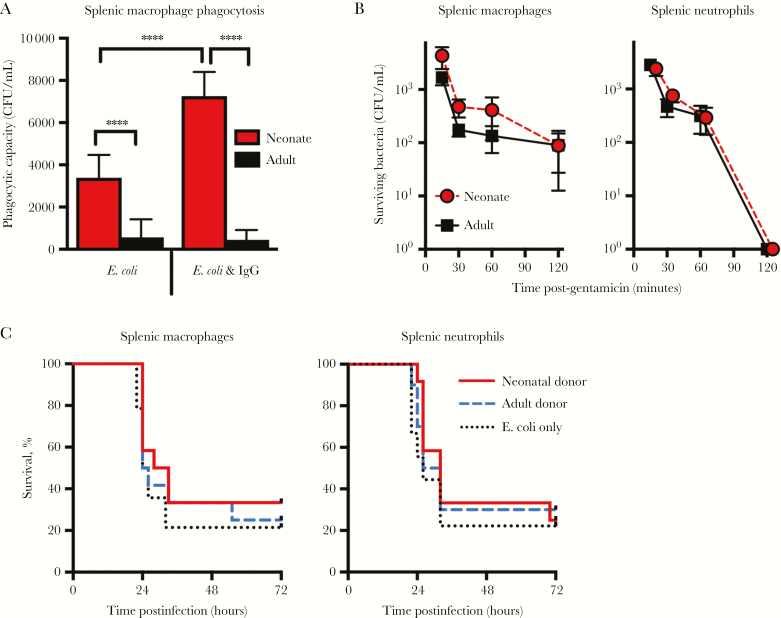Figure 3.
Neonatal neutrophils and macrophages do not demonstrate defects in Escherichia coli K1 phagocytosis and killing. A, Phagocytic capacity of neonatal or adult CD11b+ splenic macrophages plated at a multiplicity of infection of 100, treated with or without human immunoglobulin G (IgG) followed by a gentamicin protection assay to determine how many bacteria were engulfed; n = 6 per group and results combined from 2 separate experiments. ****P < .0001, one-way analysis of variance, multiple comparisons test (F value = 87.94, degrees of freedom = 35). Escherichia coli intracellular killing capacity determined by gentamicin protection assay using splenic CD11b+ macrophages and splenic CD11b+ neutrophils collected from neonatal and adult mice (B); n = 6 per group per time point and results are combined from 2 independent experiments. Bars represent ± standard error of the mean. C, 1 × 105 splenic macrophages (n = 12–14 per group) or 1 × 105 splenic neutrophils from adult (2–4 months old) or neonatal (4–6 days old) mice (n = 10–12 per group) were adoptively transferred intraperitoneally (IP) into neonatal mice immediately prior to IP E. coli infection with 103 colony-forming units (CFU). Recipients were monitored for survival using the log-rank test.

